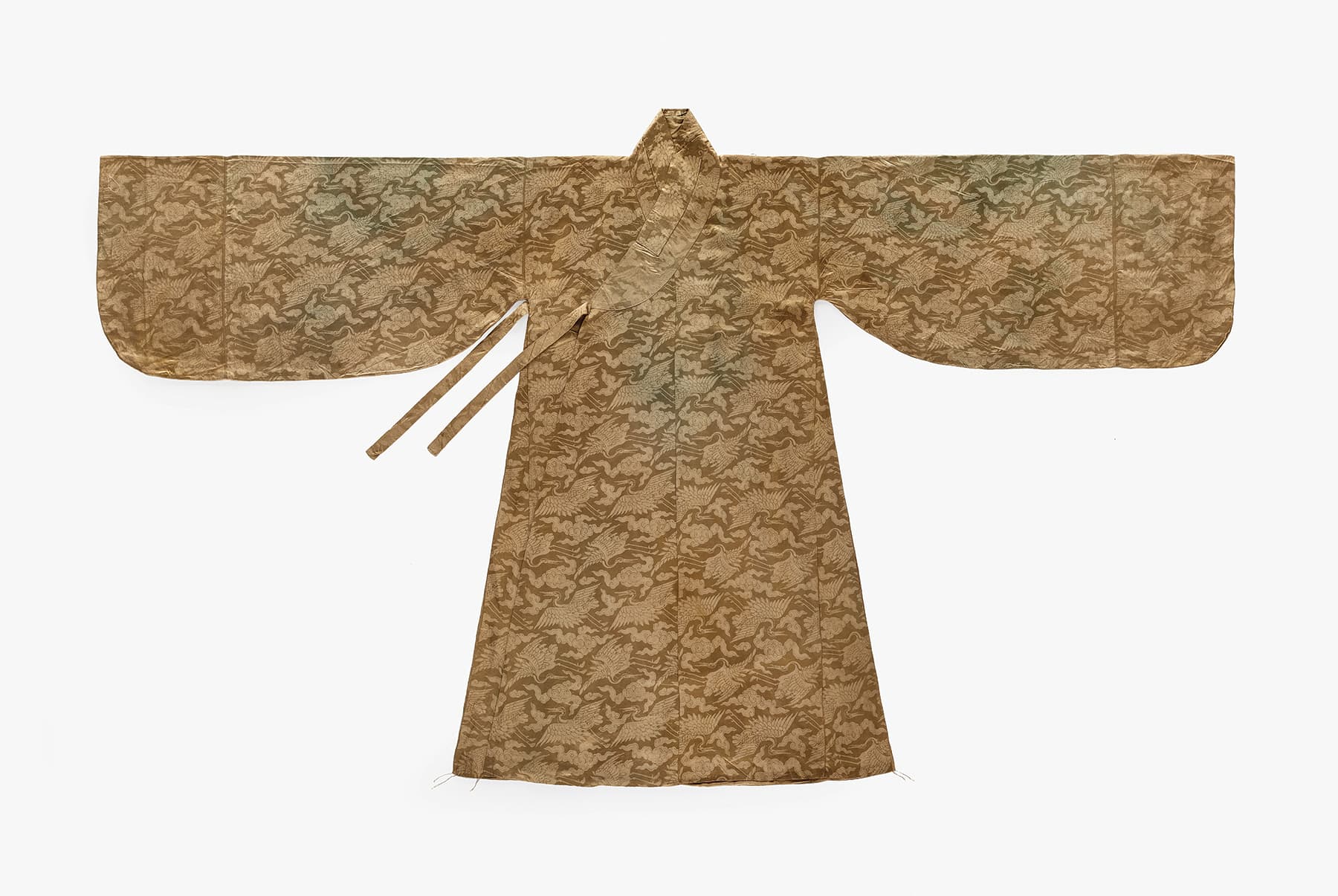
Korean Couture
- Magazine Article
- Exhibitions
Historical luxury garments inform fashion today and tomorrow

Man’s Overcoat (Jungchimak), late 1500s–mid-1600s. Korea, Joseon dynasty (1392–1910). Patterned damask silk and silk tabby. Sim Yeon’s (1587–1646) Tomb. Gyeonggi Province Museum, 12973. Photo courtesy of Gyeonggi Province Museum
In the previous issue of the magazine, we took a close look at the legacy of André Kim, one of the celebrated contemporary designers featured in Korean Couture: Generations of Revolution. To gain more insight into the legacy of Korean fashion, Cleveland Art sat down with Sooa McCormick, Korean Foundation Curator of Korean Art, and Darnell-Jamal Lisby, assistant curator of fashion, to discuss the show’s presentation of historical dress traditions and the contemporary manifestations inspired by them.
Dress history gives us insight into other cultures and customs. What customs do we learn about in this show and what do they teach us about Korean culture?
SM: Thanks to the lime-mortar burial method, which became widely popular in Korea around the late 1400s, luxury garments once worn and cherished have survived in stunningly good condition. A group of well-preserved examples dated to the 1600s, mostly excavated from the Cheongsong Sim clan’s tomb complex and now a part of the collection of the Gyeonggi Province Museum, are featured in this special exhibition. These showcase how custom-made luxury garments are an important part of early modern Korean aristocratic traditions from birth to death. For the living, fashion expressed taste and social status, but for the dead, it serves as a comfort during their journey in the afterlife. The overcoat on view once worn by Sim Yeon (1587–1646) is an excellent example of 17th-century elite men’s style.

Through the show, you juxtapose historical and contemporary ensembles. What discoveries do these groupings reveal?
DL: Juxtaposing Korean high fashion from the past and the present can lead to an understanding of how the selected contemporary designers have interpreted their historical inspirations to develop a framework and experiment with innovative methods. Lie Sang Bong’s Hat from his recent Spring 2024 collection exemplifies the dynamism of juxtaposition. On this contemporary headpiece, which adopts the silhouette of a traditional Korean hat called a gat (갓), the artist also employs the color palette used on the underroof of classical Korean buildings to create a textured pattern.

Which design techniques is Lee Jean Youn, another featured contemporary artist, bringing into the fashion industry?
DL: His artistic and technical prowess as a couturier led to his being the first Korean designer to be invited by the Fédération de la Haute Couture et de la Mode to show haute couture collections from 2010 to 2012. He has a way of taking his inspirations to minimalistic yet elegant measures. For instance, his multilayered evening dress from the Spring/Summer 2011 Haute Couture collection combines the influence of historical Korean fashion and art and the iconic Seven Layered Dress by André Kim. In this sense, Lee’s haute couture works featured in the exhibition act as a portal between the past, the present, and the future.
What do you hope our visitors glean from the exhibition?
SM: Quite simply, we hope they will see that couture is not exclusively a Western practice, but rather that it exists in many forms globally and has endured throughout time. We are excited to present how the rich tradition of Korean fashion and art has empowered contemporary Korean fashion designers to challenge existing biases and to evoke the value of inclusivity in the future global fashion industry.